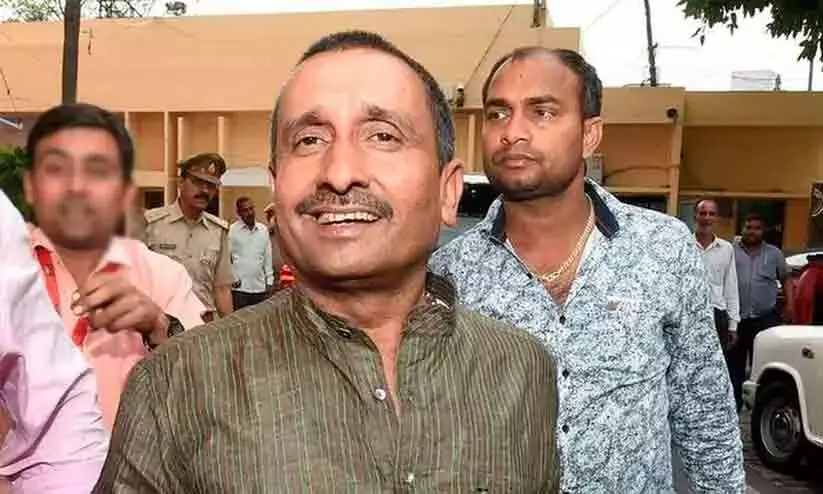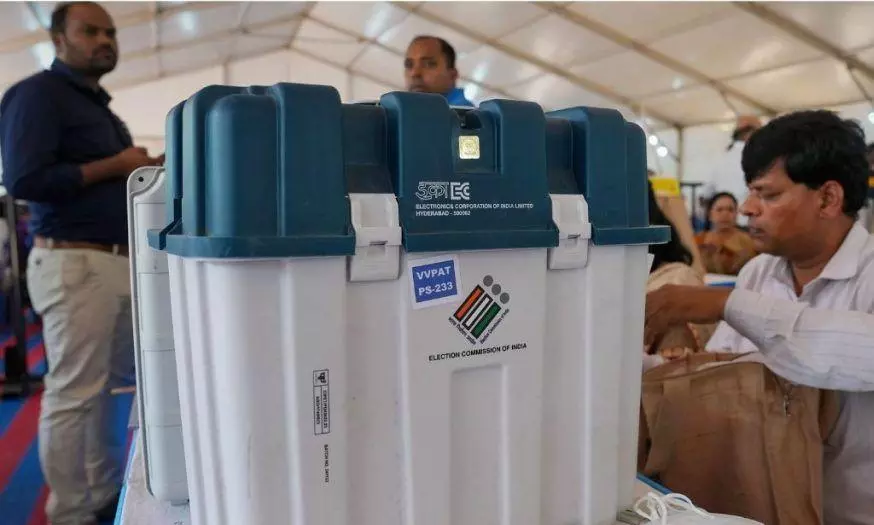
Karnataka Assembly Elections: Cong doubts EVMs used in K'tka were from South Africa, ECI clarifies
text_fieldsBengaluru: As the counting of the Karnataka Assembly elections has just begun, the Election Commission of India clarified that the Electronic Voting Machines (EVM) which had been used in the recently held Karnataka assembly polls were neither brought from South Africa nor imported from anywhere else.
The ECI statement comes in response to Congress leader Randeep Surjewala’s allegation that the Electronic Voting Machines (EVM) which had been used in the Karnataka elections were brought from South Africa, expressing his concerns over the security of the EVMs.
“We have been informed of this by various sources including the fact all these EVMs have been received directly back from South Africa without going through the process of re-validation and re-verification by the appropriate software/mechanisms by the manufacturer i.e. Electronics Corporation of India,” the Congress leader wrote in his letter, as cited by the EC in its response.
Denying the allegations, the ECI said that it had never sent EVMs to South Africa to be used there for their elections, nor imported any from other countries, since all the EVMs are being produced indigenously the question of sourcing from other countries is invalid. The EC further clarified that South African elections do not utilize EVMs, as indicated on the country's Election Commission website, which states that paper ballots are used.
On its website, the ECI states that Electronic Voting Machines (EVMs) are produced domestically by two Public Sector Units (PSUs), Bharat Electronics Ltd. in Bengaluru and Electronics Corporation of India Ltd. in Hyderabad.
The ECI website states that after the introduction of EVMs in Indian elections, several countries, including Bhutan, Nepal, and Namibia, have used EVMs made in India in their own elections.
EVMs consist of two parts: the balloting unit and the control unit, which are connected by a 5-meter cable. The balloting unit is located in the voting compartment, where voters press a button against the name and symbol of the candidate they prefer. The control unit is with the EC-appointed polling officer and serves as the EVM’s “brain.” The balloting unit is turned on only after the polling officer presses the “Ballot” button on the control unit.
The software program code for EVMs is written in-house by the two PSUs and subjected to strict security procedures at the factory level. The EC website states that the secret source code is accessible only to a few engineers and that factory engineers are not aware of the constituency-wise deployment of the machines.
EVMs are subject to stringent security protocols at the manufacturer level, including software security measures. Each ECI-EVM has a serial number, and the Election Commission can use EVM-tracking software to determine the machine’s location from its database. Every microchip has an embedded identification number, and the producer’s digital signature is on it. Any attempt to replace a microchip will make the EVM inoperative and detectable.
The EC has laid down a Standard Operating Procedure for discarding EVMs. The process of destroying an EVM and its chip takes place in the presence of the Chief Electoral Officer of the state or their representatives within the factory of the manufacturers.
EVMs were first proposed by the Election Commission in 1977 to save costs, reduce paper usage, and act as a safeguard against attempts to rig elections. In 1982-83, EVMs were used for the first time in 50 polling stations of the Parur Assembly Constituency in Kerala.
However, the Supreme Court suspended their usage in 1984, and it was only after a 1988 amendment to the Representation of the People Act of 1951 that they were reintroduced in 1989. By 2001, all State Assembly elections saw EVM usage, and in 2004’s Lok Sabha election, all 543 constituencies used EVMs.























